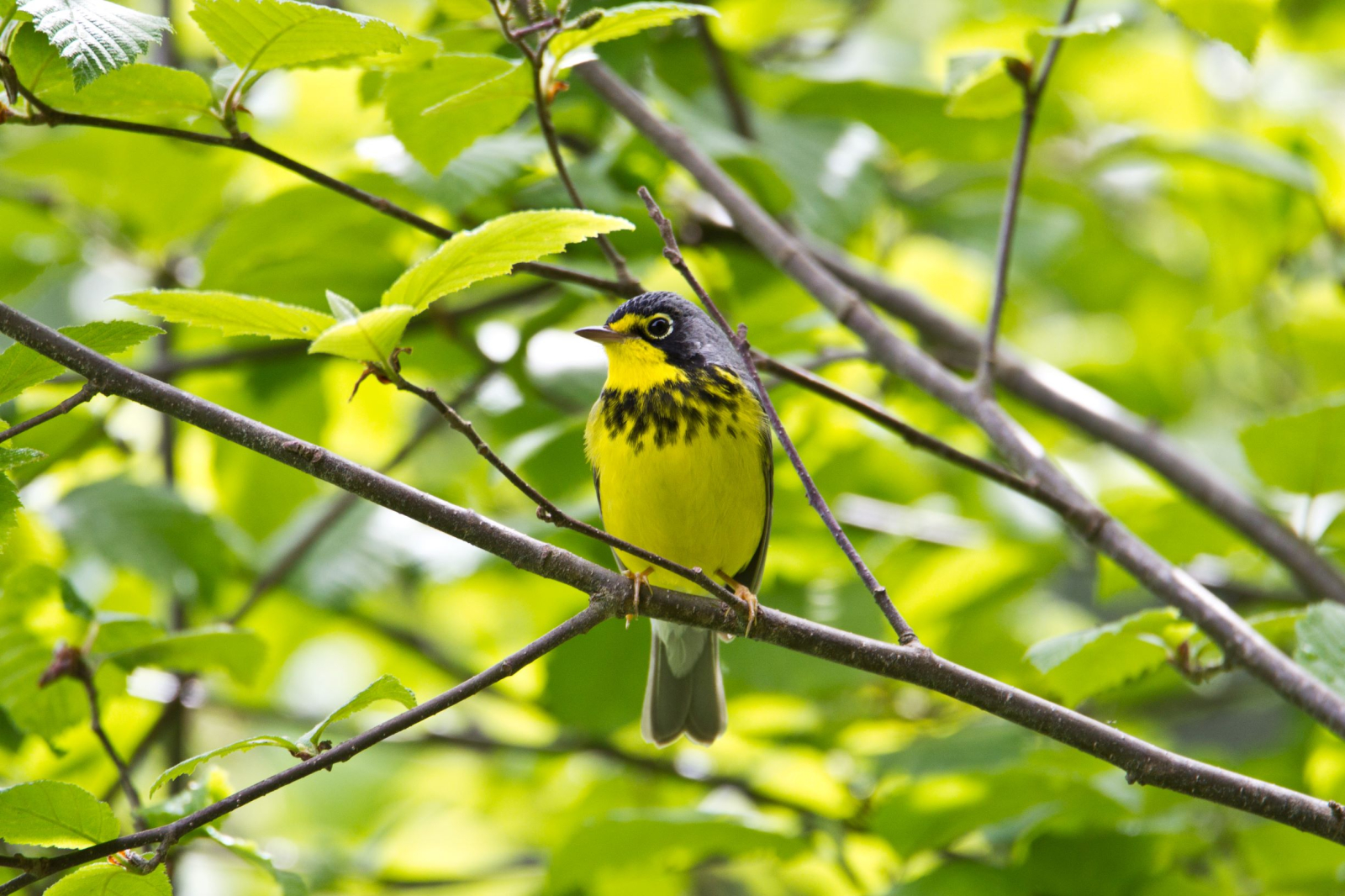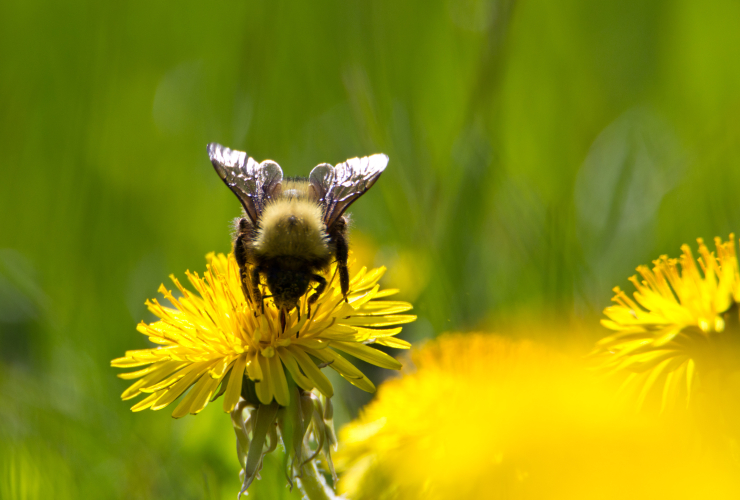The Nova Scotia government just lost a 16-month lawsuit to a flower, moose, turtle, two birds and a tree, which, it goes without saying, has never happened before.
In January 2019, the Federation of Nova Scotia Naturalists, the Blomidon Naturalists Society and the Halifax Field Naturalists joined with Juniper Law to request a “judicial review” of the province’s failure to uphold its 1998 Endangered Species Act. And quite a failure it’s been.
To date, the majority of species listed under the act have yet to receive all of its guaranteed protections, such as the establishment of recovery teams, the publishing of recovery plans and the identification of core habitat. Protections for some species, such as the ram’s head lady slipper, are more than a decade overdue.

And on May 29, Justice Christa Brothers of the Supreme Court of Nova Scotia declared these failures “chronic and systemic” in her final ruling on the case.
Brothers has ordered the province’s Department and Lands and Forestry to fully accommodate the six species specified in the lawsuit — the ram’s head lady slipper, the mainland moose, the wood turtle, the eastern Wood pewee, the Canada warbler and the black ash — and referenced the 65 other species languishing under the act.
“It’s a pretty strong ruling by the judge here, identifying a systemic, chronic failure,” said lawyer Jamie Simpson of Juniper Law. “No minister wants to hear that about their department.”
While Justice Brothers ultimately ordered the province, specifically Lands and Forestry Minister Iain Rankin, to uphold the Endangered Species Act, she did not impose a deadline for the province to do so, nor did she agree that the province should be monitored by the court throughout the process, as Simpson had requested.
“I understand where she’s coming from,” said Simpson, admitting such measures are at least uncommon. Should a return to court on behalf of species at risk become necessary, he said, his case for such deadlines and monitoring would be much stronger.
“Time will tell,” he said. “(This is) a win for some of Nova Scotia’s more vulnerable wildlife. … For a number of years, people have been pointing out these shortcomings to the department, with different, well-assembled reports from (various) organizations, and still nothing happened. To finally have this decision from a judge, it’s very gratifying.”
Setting precedents
This is the first time Nova Scotia’s Endangered Species Act has been the subject of legal action, and the first time such legislation has been upheld in a Maritime court, setting several legal precedents that could have enormous consequences for regional conservation.
The first precedent is that the Endangered Species Act is non-discretionary, meaning the province absolutely must fulfill all its obligations to every listed species — recovery teams, recovery plans with regular reviews, core habitat, etc.
While unsurprising, this point is remarkably contentious in the history of species-at-risk legislation. Canada’s Species at Risk Act was the subject of an Ecojustice lawsuit in 2014, for example, which ultimately forced the federal government to catch up on several overdue provisions for various species.
Time and again, ministers across the country have decided not to apply these acts where inconvenient, largely without backlash.
The second precedent of note in the Nova Scotia lawsuit was the right of citizen organizations — in this case, a trio of naturalist clubs — to take legal action on behalf of at-risk species. It was argued in court by the province’s lawyer that naturalists should not have this right, since the act and its provisions didn’t impact them directly. Justice Brothers responded to this suggestion specifically in her decision this May.
“(These) species need people like Mr. (Bob) Bancroft (president of the Federation of Nova Scotia Naturalists) and organizations like the other applicants and (Ecojustice) to take such action and speak for them,” she wrote. “It would be absurd if no person or interested entity could bring such reviews under the Endangered Species Act to hold government to account. How else would the mainland moose, ram’s head lady slipper, Canada warbler, black ash, wood turtle or eastern wood pewee find protection when and if a government failed to reasonably execute its duties and responsibilities?”
Simpson said that his naturalist clients were originally very cautious in launching this lawsuit, but expects their victory has had the effect of emboldening them and others in the pursuit of justice.
“What I think this decision has done,” said Simpson, “is show to these individual citizens … and these non-advocacy groups, that (legal action) isn’t such a bad thing. It’s legitimate for (them) to request the assistance of the courts to uphold the rule of law.”
Soren Bondrup-Nielsen, president of the Blomidon Naturalists Society, echoed that point earlier this June, saying he and his board are very willing to return to court if the Lands and Forestry department doesn’t do what it was instructed to do.
“We’re certainly going to keep our eye on them,” he said. “I think there’s an appetite among people to not accept the status quo anymore.”
He said that, in his estimation, the global pandemic presently upsetting the foundations of modern life has empowered people to think differently, and to be less complacent about the shortcomings of society. The Black Lives Matter march in Wolfville, N.S., which Bondrup-Nielsen and a thousand or so others attended, made this point very clear to him.
“I think there are so many social and environmental issues that are coming together, I hope, so that we will see real change,” he said. “It’s an exciting thought, but maybe I’m too optimistic. I think the Endangered Species Act is a step in the right direction. It’s not the solution (to our biodiversity crisis), but it’s certainly a step.”

What’s next?
There is a 30 day-period after Justice Brothers formally signs her decision in which the provincial government will be able to appeal, an outcome Simpson and Bondrup-Nielsen both consider unlikely.
“I would be surprised if they decided to appeal it,” said Simpson, “but you never know.”
In the meantime, Juniper Law is preparing for another lawsuit against the Department of Land and Forestry for its controversial decision to delist Owls Head Provincial Park on the province’s eastern shore, and attempt to sell it to a developer for the construction of three golf courses, thus undermining the sanctity of other protected areas across the province.
This move was done without public consultation and without public knowledge until it was revealed months after the fact by an investigative reporter with the CBC.
In this new case, filed in late January, Simpson’s clients are Bob Bancroft, president of the Federation of Nova Scotia Naturalists, and Eastern Shore Forest Watch, an organization dedicated to the protection of land on the province’s eastern shore. Bondrup-Nielsen and the Blomidon Naturalists Society were very nearly clients for this lawsuit as well, but the board meeting at which they voted to join was held after the suit was filed.
This lawsuit and the one concerning species at risk were afforded by way of fundraising and crowdsourcing.
If the lawsuit over Owls Head Provincial Park is given permission by the court to proceed, it will likewise set precedent in Nova Scotia law.
I wonder if this judgement
I wonder if this judgement has a broader impact: it may be politically wise to pass legislation, then expedient to ignore it's provisions. This ruling seems to say that's a no no (as it should be).







Comments